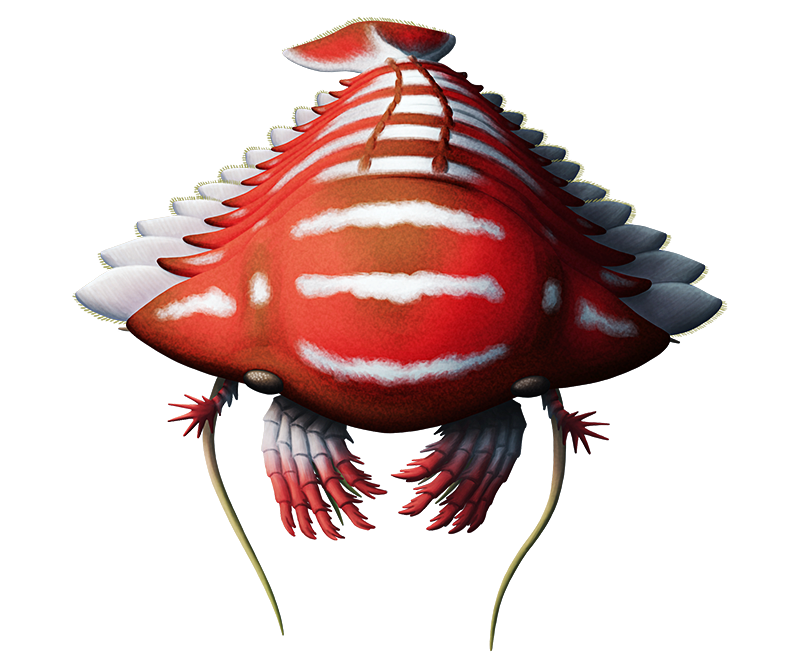Nicknamed “Santa Claws”, Sanctacaris uncata was a marine arthropod from the Middle Cambrian (~505 mya) Burgess Shale deposits of Canada. Its exact evolutionary relationships are unclear, but it’s thought to have been very closely related to or part of an early branch of the chelicerates – the lineage that includes modern arachnids and horseshoe crabs.
Measuring up to about 9cm long (3.5″), it had forward-facing eyes and five pairs of grasping appendages on the underside of its head, adaptations that suggest it was an active predator convergently similar to anomalocaridids. It probably swam around grabbing onto whatever small prey items it could catch, trapping them in its “limb basket” while it ate them.

